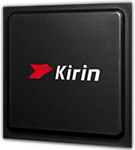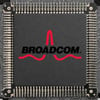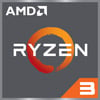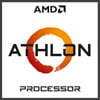
Intel Core i3-3217U Benchmark, test e specifiche
Ultimo aggiornamento:
Intel Core i3-3217U è stato rilasciato in Q2/2012 e ha 2 core. Il processore può elaborare 4 thread contemporaneamente e utilizza una scheda madre con il socket BGA 1023. Nel benchmark Geekbench 5, Intel Core i3-3217U ha ottenuto un risultato di 370 punti (single-core) o 860 punti (multi -nucleo).
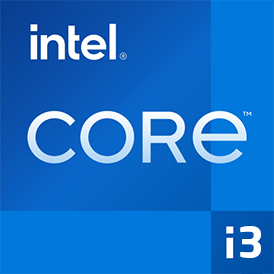
| Cognome: | Intel Core i3-3217U |
|---|---|
| Famiglia: | Intel Core i3 (205) |
| Gruppo CPU: | Intel Core i 3000U (12) |
| Architettura : | Ivy Bridge U |
| Segmento: | Mobile |
| Generazione: | 3 |
| Predecessore: | -- |
| Successore: | -- |
CPU Cores e frequenza di base
Il Intel Core i3-3217U ha 2 core. La frequenza di clock di Intel Core i3-3217U è 1,80 GHz. È possibile effettuare una valutazione iniziale delle prestazioni utilizzando il numero di core della CPU.
| CPU Cores / Threads: | 2 / 4 |
|---|---|
| Architettura principale: | normal |
| Cores: | 2x |
| Hyperthreading / SMT: | Si |
|---|---|
| Overclocking: | No |
| Frequenza: | 1,80 GHz |
| Turbo Frequenza (1 Core ): | -- |
| Turbo Frequenza (2 Cores): | -- |
Grafica interna
Intel Core i3-3217U ha una grafica integrata che il sistema può utilizzare per riprodurre in modo efficiente i video, ad esempio. Intel Core i3-3217U ha Intel HD Graphics 4000 installato, che ha 16 multiprocessori di streaming (128 shader).
| nome GPU: | Intel HD Graphics 4000 |
|---|---|
| Frequenza GPU : | 0,35 GHz |
| GPU (Turbo ): | 1,10 GHz |
| Unità di esecuzione: | 16 |
| Shader: | 128 |
| Hardware Raytracing: | No |
| Data di lancio : | Q1/2011 |
| Max. visualizzazioni: | 3 |
|---|---|
| Generation: | 7 |
| Direct X: | 11.0 |
| Tecnologia : | 22 nm |
| Max. GPU Memoria: | 2 GB |
| Frame Generation: | No |
Hardware codec support
I processori con grafica integrata possono elaborare più velocemente utilizzando questi codec video. Il supporto per i codec moderni può aumentare significativamente l'efficienza del sistema durante la riproduzione video.
| h265 / HEVC (8 bit): | No |
|---|---|
| h265 / HEVC (10 bit): | No |
| h264: | Decodificare / Codificare |
| VP8: | No |
| VP9: | No |
| AV1: | No |
|---|---|
| AVC: | Decodificare / Codificare |
| VC-1: | Decodificare |
| JPEG: | Decodificare |
Memoria & PCIeIntel Core i3-3217U supporta un massimo di 32 GB memoria. A seconda della scheda madre, il processore può utilizzare un massimo di 2 (Dual Channel) canali di memoria. Ciò si traduce in una larghezza di banda massima della memoria principale di 25,6 GB/s. |
|
| Tipo di memoria : | Banda di memoria: |
|---|---|
| DDR3-1600 | 25,6 GB/s |
| Max. Memoria: | 32 GB |
| Canali di memoria : | 2 (Dual Channel) |
| ECC: | No |
| PCIe: | 2.0 x 16 |
| PCIe Larghezza di banda: | 8,0 GB/s |
Gestione termicaIntel Core i3-3217U ha un TDP di 17 W. Sulla base del TDP, il produttore del sistema può e deve adattare la soluzione di raffreddamento al processore. |
|
|---|---|
| TDP (PL1 / PBP): | 17 W |
| TDP (PL2): | -- |
| TDP up: | -- |
| TDP down: | -- |
| Tjunction max.: | 105 °C |
Dettagli tecnici
La produzione moderna riduce il calore disperso di un processore e ne aumenta l'efficienza. Intel Core i3-3217U è realizzato in 22 nm e ha 3,00 MB cache.
| Tecnologia : | 22 nm |
|---|---|
| Design a chip: | Monolitico |
| Presa: | BGA 1023 |
| L2-Cache: | -- |
| L3-Cache: | 3,00 MB |
| AES-NI: | Si |
| Sistemi operativi: | Windows 10, Linux |
| Virtualizzazione: | VT-x, VT-x EPT |
|---|---|
| Set di istruzioni (ISA): | x86-64 (64 bit) |
| Estensioni ISA: | SSE4.1, SSE4.2, AVX |
| Data di lancio : | Q2/2012 |
| Prezzo di rilascio: | -- |
| Numero di parte: | -- |
| Documenti: | Scheda tecnica |
Valuta questo processore
Risultati di benchmark

I risultati del benchmark per Intel Core i3-3217U sono stati attentamente controllati da noi. Pubblichiamo solo risultati di benchmark che sono stati creati da noi o che sono stati inviati da un visitatore e poi controllati da un membro del team. Tutti i risultati sono basati e rispettano le nostre linee guida di benchmark.
Geekbench 5, 64bit (Single-Core)
Geekbench 5 è un benchmark multi-piattaforma che usa in modo intensivo la memoria del sistema.Il test single-core utilizza solo un nucleo elaborativo della CPU. A tal fine, il numero di nuclei elaborativi o la capacità di hyperthreading non sono rilevanti.

|
Intel Celeron 3965Y
2C 2T @ 1,50 GHz |
||

|
AMD Athlon II X2 220
2C 2T @ 2,80 GHz |
||
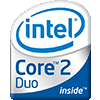
|
Intel Core2 Duo E6750
2C 2T @ 2,66 GHz |
||
|
|
Intel Core i3-3217U
2C 4T @ 1,80 GHz |
||

|
AMD Phenom II X4 B95
4C 4T @ 3,00 GHz |
||
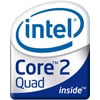
|
Intel Core 2 Quad Q8400
4C 4T @ 2,66 GHz |
||

|
AMD Athlon II X2 240e
2C 2T @ 2,80 GHz |
||
Geekbench 5, 64bit (Multi-Core)
Geekbench 5 è un benchmark multi-piattaforma che usa in modo intensivo la memoria del sistema.Il test multi-core coinvolge tutti i nuclei elaborativi della CPU e si avvale del hyperthreading.

|
Qualcomm Snapdragon 820 Lite
4C 4T @ 1,80 GHz |
||

|
Intel Pentium B970
2C 2T @ 2,30 GHz |
||

|
MediaTek MT8176
6C 6T @ 2,00 GHz |
||
|
|
Intel Core i3-3217U
2C 4T @ 1,80 GHz |
||

|
Intel Celeron N4020C
2C 2T @ 2,80 GHz |
||

|
MediaTek Helio P23
8C 8T @ 2,50 GHz |
||
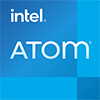
|
Intel Atom x7-Z8750
4C 4T @ 2,56 GHz |
||
Geekbench 6 (Single-Core)
Geekbench 6 è un punto di riferimento per computer, notebook e smartphone moderni. Ciò che è nuovo è un utilizzo ottimizzato delle architetture CPU più recenti, ad esempio basate sul concetto big.LITTLE e combinando core CPU di diverse dimensioni. Il benchmark single-core valuta solo le prestazioni del core della CPU più veloce, il numero di core della CPU in un processore è irrilevante qui.
|
|
HiSilicon Kirin 710A
8C 8T @ 2,00 GHz |
||

|
Intel Pentium 2117U
2C 2T @ 1,80 GHz |
||

|
MediaTek MT8183
8C 8T @ 2,00 GHz |
||
|
|
Intel Core i3-3217U
2C 4T @ 1,80 GHz |
||

|
Intel Pentium 3558U
2C 2T @ 1,70 GHz |
||

|
MediaTek Kompanio 500
8C 8T @ 2,00 GHz |
||

|
Intel Celeron 1000M
2C 2T @ 1,80 GHz |
||
Geekbench 6 (Multi-Core)
Geekbench 6 è un punto di riferimento per computer, notebook e smartphone moderni. Ciò che è nuovo è un utilizzo ottimizzato delle architetture CPU più recenti, ad esempio basate sul concetto big.LITTLE e combinando core CPU di diverse dimensioni. Il benchmark multi-core valuta le prestazioni di tutti i core della CPU del processore. I miglioramenti del thread virtuale come AMD SMT o l'Hyper-Threading di Intel hanno un impatto positivo sul risultato del benchmark.

|
Intel Celeron 3865U
2C 2T @ 1,80 GHz |
||

|
Intel Pentium B950
2C 2T @ 2,10 GHz |
||

|
Intel Pentium J3710
4C 4T @ 2,64 GHz |
||
|
|
Intel Core i3-3217U
2C 4T @ 1,80 GHz |
||

|
Intel Pentium 3805U
2C 2T @ 1,90 GHz |
||

|
Intel Pentium N3540
4C 4T @ 2,66 GHz |
||

|
Intel Celeron 3765U
2C 2T @ 1,90 GHz |
||
iGPU - Prestazioni FP32 (GFLOPS a precisione singola)
Le prestazioni di calcolo teoriche dell'unità grafica interna del processore con precisione semplice (32 bit) in GFLOPS. GFLOPS indica quanti miliardi di operazioni in virgola mobile che l'iPPU può eseguire al secondo.

|
Intel Core i3-3227U
Intel HD Graphics 4000 @ 1,10 GHz |
||

|
Intel Core i5-3210M
Intel HD Graphics 4000 @ 1,10 GHz |
||

|
Intel Core i5-3230M
Intel HD Graphics 4000 @ 1,10 GHz |
||
|
|
Intel Core i3-3217U
Intel HD Graphics 4000 @ 1,10 GHz |
||

|
AMD A9-9420e
AMD Radeon R5 (Stoney Ridge) @ 0,72 GHz |
||

|
AMD A6-9220C
AMD Radeon R5 (Stoney Ridge) @ 0,72 GHz |
||

|
AMD A6-5357M
AMD Radeon HD 8450G @ 0,72 GHz |
||
Risultati stimati da PassMark CPU Mark
Alcune delle CPU elencate di seguito sono stati sottoposti a benchmarking da CPU-monkey. Tuttavia, la maggior parte delle CPU non sono state testate e i risultati sono stati stimati utilizzando una formula segreta di proprietà di CPU-monkey. Come tali, essi non riflettono con precisione i valori attuali di Passmark CPU Mark e non sono stati approvati da PAssMark Software Pty Ltd.

|
Intel Core i3-2310M
2C 4T @ 2,10 GHz |
||

|
Intel Core i3-2312M
2C 4T @ 2,10 GHz |
||

|
Intel Pentium N3540
4C 4T @ 2,66 GHz |
||
|
|
Intel Core i3-3217U
2C 4T @ 1,80 GHz |
||

|
Intel Celeron N3150
4C 4T @ 2,08 GHz |
||

|
Intel Core i7-680UM
2C 4T @ 1,46 GHz |
||

|
Intel Atom Z3795
4C 4T @ 1,59 GHz |
||
CPU-Z Benchmark 17 (Multi-Core)
Il benchmark CPU-Z misura le prestazioni di un processore misurando il tempo impiegato dal sistema per completare tutti i calcoli del benchmark. Più velocemente viene completato il benchmark, maggiore è il punteggio.

|
AMD A6-6310
4C 4T @ 2,00 GHz |
||

|
Intel Celeron G530
2C 2T @ 2,40 GHz |
||

|
Intel Pentium B980
2C 2T @ 2,40 GHz |
||
|
|
Intel Core i3-3217U
2C 4T @ 1,80 GHz |
||

|
Intel Pentium E5400
2C 2T @ 2,70 GHz |
||

|
Intel Core2 Duo E8200
2C 2T @ 2,66 GHz |
||

|
Intel Core2 Duo E7300
2C 2T @ 2,66 GHz |
||
Cinebench R15 (Single-Core)
Cinebench R15 è il successore di Cinebench 11.5 ed è anch'esso basato su Cinema 4D. Cinema 4D è un software usato a livello mondiale per creare forme in 3D. Il test single-core utilizza solo un nucleo elaborativo della CPU. A tal fine, il numero di nuclei elaborativi o la capacità di hyperthreading non sono rilevanti.

|
AMD A10-4657M
4C 4T @ 3,20 GHz |
||

|
AMD A8-6500T
4C 4T @ 3,10 GHz |
||

|
Intel Core i3-4030U
2C 4T @ 1,90 GHz |
||
|
|
Intel Core i3-3217U
2C 4T @ 1,80 GHz |
||

|
Intel Pentium 4405Y
2C 4T @ 1,50 GHz |
||

|
AMD A10-7850K
4C 4T @ 4,00 GHz |
||

|
AMD A9-9410
2C 2T @ 3,50 GHz |
||
Cinebench R15 (Multi-Core)
Cinebench R15 è il successore di Cinebench 11.5 ed è anch'esso basato su Cinema 4D. Cinema 4D è un software usato a livello mondiale per creare forme in 3D. Il test multi-core coinvolge tutti i nuclei elaborativi della CPU e si avvale del hyperthreading.

|
Intel Pentium N3540
4C 4T @ 2,66 GHz |
||

|
Intel Celeron 2950M
2C 2T @ 2,00 GHz |
||

|
Intel Celeron G1610T
2C 2T @ 2,30 GHz |
||
|
|
Intel Core i3-3217U
2C 4T @ 1,80 GHz |
||

|
AMD A8-7150B
4C 4T @ 2,50 GHz |
||

|
Intel Core i3-4012Y
2C 4T @ 1,50 GHz |
||

|
AMD Phenom II X2 B55
2C 2T @ 3,00 GHz |
||
Benchmarks

Geekbench 5 (SC)
2.488 inserimenti
2.488 inserimenti

Geekbench 5 (MC)
2.461 inserimenti
2.461 inserimenti

Geekbench 6 (SC)
1.755 inserimenti
1.755 inserimenti

Geekbench 6 (MC)
1.703 inserimenti
1.703 inserimenti

FP32 SP (iGPU)
2.042 inserimenti
2.042 inserimenti
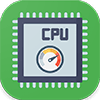
PassMark CPU-Mark
2.392 inserimenti
2.392 inserimenti

CPU-Z Benchmark 17 (MC)
733 inserimenti
733 inserimenti

Cinebench R15 (SC)
1.106 inserimenti
1.106 inserimenti

Cinebench R15 (MC)
1.101 inserimenti
1.101 inserimenti
Confronti più popolari
Torna all'indice



